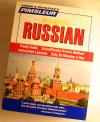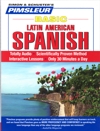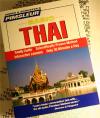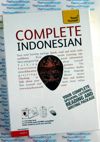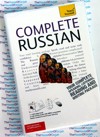Living Language - Tagalog - A complete course for Beginners
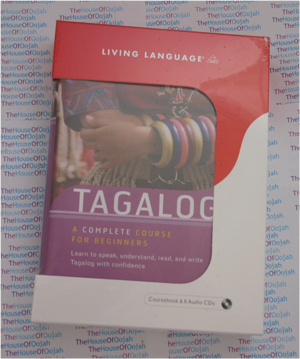
Living Language - TagalogA complete course for BeginnersGet other Tagalog Language Learning Audio Book CDs click here |
 |
Living Language - Tagalog - A complete course for Beginners - Audio Book CDBrand New 6 CDs and Course Book This simple and effective introduction to Tagalog will teach you everything you need to speak, understand, read, and write in Tagalog. This program assumes no background in the language, and it explains each new concept clearly with plenty of examples, making it ideal for beginners or anyone who wants a thorough review. Living Language Tagalog includes: About the Tagalog LanguageTagalog is one of the major languages used in the Philippines. Its standardized form, Filipino, is the principal language of the national television and radio, though broadsheet newspapers are almost completely in English. It is the primary language of public education. As Filipino, it is, along with English, a co-official language and the sole national language. Tagalog is widely used as a lingua franca throughout the country, and in overseas Filipino communities. However, while Tagalog may be prevalent in many fields, English, to varying degrees of fluency, is more prevalent in the fields of government and business. In 1937, Tagalog was selected as the basis of the national language by the National Language Institute. In 1939, Manuel L. Quezon named the national language "Wikang Pambansa" ("National Language"). Twenty years later, in 1959, it was renamed by the Secretary of Education, Jose Romero, as Pilipino to give it a national rather than ethnic label and connotation. The changing of the name did not, however, result in acceptance at the conscious level among non-Tagalogs, especially Cebuanos who had not accepted the selection.. In 1971, the language issue was revived once more, and a compromise solution was worked out�a "universalist" approach to the national language, to be called Filipino rather than Pilipino. When a new constitution was drawn up in 1987, it named Filipino as the national language. The constitution specified that as the Filipino language evolves, it shall be further developed and enriched on the basis of existing Philippine and other languages. Tagalog is a Central Philippine language within the Austronesian language family. Being Malayo-Polynesian, it is related to other Austronesian languages such as Indonesian, Malay, Fijian, Maori (of New Zealand), Hawaiian, Malagasy (of Madagascar), Samoan, Tahitian, Chamorro (of Guam and the Northern Mariana Islands), Tetum (of East Timor), and Paiwan (of Taiwan). It is closely related to the languages spoken in the Bicol and Visayas regions such as Bikol, Hiligaynon, Waray-Waray, and Cebuano. The Tagalog homeland, or Katagalugan, covers roughly much of the central to southern parts of the island of Luzon - particularly in Aurora, Bataan, Batangas, Bulacan, Camarines Norte, Cavite, Laguna, Metro Manila, Nueva Ecija, Quezon, and Rizal. Tagalog is also spoken natively by inhabitants living on the islands of Lubang, Marinduque, and the northern and eastern parts of Mindoro. It is spoken by approximately 64.3 million Filipinos, 96.4% of the household population. 21.5 million, or 28.15% of the total Philippine population, of which speak it as a native language. Tagalog speakers are found in other parts of the Philippines as well as throughout the world, though its use is usually limited to communication between Filipino ethnic groups. It is the sixth most-spoken language in the United States with over a million speakers. In Canada it is spoken by 235,615 .Tagalog was declared the official language by the first constitution in the Philippines, the Constitution of Biak-na-Bato in 1897.] In 1935, the Philippine constitution designated English and Spanish as official languages, but mandated the development and adoption of a common national language based on one of the existing native languages. After study and deliberation, the National Language Institute, a committee composed of seven members who represented various regions in the Philippines, chose Tagalog as the basis for the evolution and adoption of the national language of the Philippines. President Manuel L. Quezon then, on December 30, 1937, proclaimed the selection of the Tagalog language to be used as the basis for the evolution and adoption of the national language of the Philippines. In 1939 President Quezon renamed the proposed Tagalog-based national language as wikang pambans�¢ (national language). In 1939, the language was further renamed as "Pilipino". The 1973 constitution designated the Tagalog-based "Pilipino", along with English, as an official language and mandated the development and formal adoption of a common national language to be known as Filipino. The 1987 constitution designated Filipino as the national language, mandating that as it evolves, it shall be further developed and enriched on the basis of existing Philippine and other languages. As Filipino, Tagalog has been taught in schools throughout the Philippines. Other Philippine languages have influenced Filipino, primarily through migration from the provinces to Metro Manila of speakers of those other languages.At present, no comprehensive dialectology has been done in the Tagalog-speaking regions, though there have been descriptions in the form of dictionaries and grammars on various Tagalog dialects. Ethnologue lists Lubang, Manila, Marinduque, Bataan, Batangas, Bulacan, Tanay-Paete, and Tayabas as dialects of Tagalog. However, there appear to be four main dialects of which the aforementioned are a part; Northern (exemplified by the Bulacan dialect), Central (including Manila), Southern (exemplified by Batangas), and Marinduque. Perhaps the most divergent Tagalog dialects are those spoken in Marinduque. Linguist Rosa Soberano identifies two dialects, western and eastern with the former being closer to the Tagalog dialects spoken in the provinces of Batangas and Quezon. One example are the verb conjugation paradigms. While some of the affixes are different, Marinduque also preserves the imperative affixes, also found in Visayan and Bikol languages, that have mostly disappeared from most Tagalog dialects by the early 20th century; they have since merged with the infinitive. |
Living Language - Tagalog - A complete course for Beginners - Audio Book CD |

 0 Items (Empty)
0 Items (Empty)

